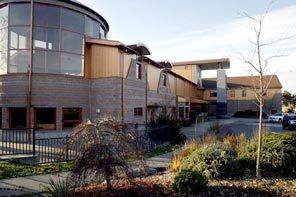Dear Bill,
I am a public schools' parent in your own general neighborhood (Seattle). I realize you have an interest in public education, and are a major participant and funder in the current “education reform” efforts being attempted nationally.
Unfortunately, I don’t agree with a number of the choices and “investments” you are making in our schools. I believe they have not been that effective, and some of them are even damaging.
Your all-tech $63 million “School of the Future” in Philadelphia, for example, apparently hasn’t worked out so well. Your $2 billion “Small Schools Initiative” was ultimately canceled (though the concept of smaller schools seems sound to me). And now you are promoting charter schools and “merit pay” for teachers as a measure of “teacher effectiveness,” even though recent reputable studies from Stanford and Vanderbilt universities cast serious doubts on both of these concepts, showing that most charters are not better than public schools and merit pay doesn’t work. (Also see “The Pillars of Education Reform Are Toppling.”)
In other words, you seem to be spending a lot of money and not getting good results.
Does “merit pay” actually improve “teacher effectiveness”?
As a keynote speaker at the national American Federation of Teachers (AFT) conference that was held here in Seattle last week, you said: “The truly impressive reforms share the same strategic core – they all include fair and reliable measures of teacher effectiveness that are tied to gains in student achievement. Public schools have never had this before. It’s a huge change – the kind of change that could match the scale of the problem.”
By this you mean teachers being measured by and paid according to student test scores.
But lashing teachers to test scores is the kind of “change” that will quash innovation and passion, and turn teachers into test-prep robots and schools into test-prep factories. It leads to teaching to the test. That’s already happening in some schools as a result of No Child Left Behind “Annual Yearly Progress” pressures. Not all students test well, by the way – didn’t Einstein famously get Fs in school? And not all learning shows up on tests. I have said before, how do you measure that “Aha!” moment when a child understands something for the first time? It will never show up on a standardized test, but those moments are the real measure of successful teaching.
Above all, research shows that “merit pay” for teachers doesn’t work – it does not lead to true and lasting improvements in genuine student academic achievement.
Meanwhile, perfectly good teachers and principals are being sacrificed and fired under such draconian rules, as this article in the July 19 New York Times attests, “A Popular Principal, Wounded by Government’s Good Intentions.”
One of the main problems with merit pay is that it’s based on the flawed presumption that teachers are motivated by greed and competition, and not by collaboration and helping students learn. But teaching is a cooperative profession; the best teachers are not motivated by making more money than their colleagues.
You yourself have said you want teachers to share their expertise with each other, so they can all become stronger teachers. They already do that, for starters. But how likely is it that they will continue to help each other if you set up a scheme in which they are pressured to compete with each other to get bonuses?
If you want teachers to improve, help give them the respect and salaries they deserve, the resources they need, and the autonomy to be creative and innovative and cooperative with each other, and small classes so they can give each student the attention s/he needs.
Why charter schools?
At the National Charter Schools Conference on June 29 in Chicago where you also spoke, you promoted charters – privately run schools that use public money but have little to no public oversight. Why do you keep promoting this concept when growing evidence shows that most charters are no better than public schools? In fact, according to Stanford’s CREDO study, as many as 83 percent of charter schools perform no better or do worse than public schools.
Even the Secretary of Education Arne Duncan recently admitted at the same convention of charter operators that charters have serious problems: “…unfortunately, we have far too many mediocre charters and we have far too many charter schools that are absolutely low performing.” (Duncan’s address to the National Charter Schools Conference, July 1, 2010.)
(Also see: “Study Finds No Clear Edge for Charter Schools,” Education Week, June 29, 2010.)
Education reformers repeatedly claim to be “data-driven.” The data do not support charters.
If you support innovation, take a look around inside public school districts. Secretary Duncan recently toured Aviation High School, an innovative public school here in the Puget Sound area. Check out the Nova Project, an innovative alternative high school in Seattle that has some of the most independent thinking and civically aware kids I’ve ever met and some of the highest SAT scores in the district. In Seattle, we also have successful and award- winning schools for highly gifted kids that challenge these kids with an accelerated and deeper curriculum while keeping them in with their age group peers (Accelerated Progress Program), and a number of alternative schools that all have waitlists because they are so popular – Salmon Bay K-8, Thornton Creek. And yet your education reform colleagues and your own foundation are pushing curriculum alignment and standardization on all our schools, quashing any chance for individuality or innovation. That’s a mixed message you are sending.
While it is certainly good of you to be generous with your wealth, it would seem that you are funneling good money after bad, as the saying goes.
So I have some suggestions for you. As a parent with children in public schools, as someone who is the product of both private and public schools and an international education, I hope you will consider my thoughts on how you can direct your public education involvement in a manner that will get genuine and positive results for children. These would be investments in education that parents like me could get behind.
Here are three ideas. They are not flashy. They are not tech-oriented. But they will get positive results.
Invest in Smaller Class Sizes
If you want to fund education and make a difference, fund smaller class sizes. Help school districts hire more (and genuinely qualified – not short-term, inexperienced Teach for America type) teachers and reduce class sizes. Every child would benefit from more one-on-one interaction with a teacher. I don’t think it takes a multi-million dollar “study” to prove that. Here in Seattle our superintendent has laid off teachers two years in a row and closed schools. So class sizes are large and getting bigger.
One of the main reasons people who can afford it choose private schools is because they tend to offer smaller teacher-student ratios.
I’ve read you’d like to see kids taught en masse by one teacher on camera beaming a lecture via the Internet to thousands of students at once. While technology may have its place in our world and in schools, don’t you agree that the most valuable connection a child can have is not to the Internet, but with a teacher, a parent, a nurturing human who will give this child the individualized, personalized attention s/he needs?
Here’s a study that shows that class sizes matter: “Smaller is Better: First-hand Reports of Early Class Size Reduction in New York City Public Schools,” as does this blog: Class Size Matters.
At the AFT conference, you said something that implied that funding for public schools has gone up in my lifetime and class sizes have gone down: “The United States has been struggling for decades to improve our public schools. We have tried reform after reform. We’ve poured in new investments. Since 1973, we have doubled per-pupil spending. We’ve moved from one adult for every 14 students to one adult for every eight students.”
I am confused by this claim because all my life (which began before 1973) public schools have been scrambling for money, school districts are constantly telling us parents, our kids and their teachers that cuts and layoffs and school closures have to happen. Our own state of Washington, Bill, ranks 46th in the nation for per-pupil funding! Washington State recently passed a law mandating full state funding of K-12 education, yet that is not happening. Meanwhile in California, the public education system has been drained of property tax revenue ever since the passage of Proposition 13 in 1978.
Are you referring to student-teacher ratios? Or do these “adults” you speak of include all adults in the school district, from counselors to custodians to central district office staff? (If the latter, that would be true for Seattle, which has a disproportionately high and growing number of administrators in its overstaffed central office. See “Central Administration Efficiency in Seattle Public Schools,” a very troubling report by parent/analyst Meg Diaz.)
Class sizes have not gotten smaller in my lifetime. Neither I nor any of my children have ever been in a public school class of eight – or 14, for that matter. Here in Washington, teacher to student ratio has not gone down, even though we voted for it on Initiative 728 which passed with 72 percent of the vote in 2000.
What is your source for this data? Is it that McKinsey & Corp study that Vicki Phillips, your foundation’s education director, has referred to in the past? The same discredited consulting firm that was “a key architect of the strategic thinking that made Enron a Wall Street darling,” according to Businessweek? If so, I think you can understand how one might question their research.
Lastly here’s a personal story: One day earlier this year, I sat at my kindergarten son’s lunchroom where some of the kids were goofing around. When I told them as group to settle down, I got a limited response. But then I knelt down and looked one of the boys in the eyes and asked him about one of his hobbies, he calmed down immediately and engaged with me. That personal engagement is priceless and essential to good and inspired teaching. It’s not possible when classes are too big and teachers are overwhelmed.
Consider Grants for Books
I sense you have mixed feeling about the value of books. I understand your “School of the Future” in Philadelphia is bookless, paperless and pencil-less, but offers a laptop and Microsoft portal for every child.
I personally want my children to know the pleasure of reading an actual book, the smell of the paper, perhaps the feel of the embossed letters of the title or the details of the illustrations, the joy of summer reading while lying on the grass or idly spinning from a tire swing with a book in hand, unplugged from the wired world.
If you and Melinda were to simply create an endowment that would provide every school in the district, for example, a grant to stock their libraries, buy complete textbooks for classes, that would be an amazing gift and would go a long way toward endearing you to the community for such an obvious, tangible contribution. Because, as you may or may not know, schools like Rainier Beach High School in Seattle don’t have complete or updated sets of history books. Hard to believe, but true. Teachers across the nation still scramble and scrounge to buy class sets of books. My own brother, a public school teacher in California, is trying to gather enough copies of Shakespeare plays for his class. I’m helping him out by scouring local used bookstores up here and mailing them to him. Is this the way it should be? Don’t you agree that every child in every class should be able to take home and spend time with a book, read it on the school bus, even if they are not fortunate enough to own a laptop, and that the cost should not come out of the teacher’s own pocket?
I can imagine a bookplate with your and Melinda’s name on it. (I believe Paul Allen does something similar.) If my children were to grow up believing that you are the providers of books to Seattle school children, believe me, you would rank high in their pantheon of heroes. They love books. (The thrice-yearly Measures of Academic Progress™ computerized test your foundation may be funding, not so much.)
How about Nutrition & Health here in the U.S.?
There are kids who come to school hungry, as I’m sure you know. School districts serve packaged food of questionable nutritional value. Good nutrition would manifest itself in positive and tangible ways. I know you are concerned about health in other parts of the world — how about in your own backyard?
Imagine a Gates Foundation program that supported the creation of freshly cooked meals made of locally and sustainably grown organic produce for all of Seattle’s public schools. (I don’t mean Monsanto-style GM foods, by the way.) I promise you that a well-fed child will do better in school than one who is hungry or on a nutritionally empty diet. This would also create business opportunities for local farmers.
In sum, these ideas, simple as they might seem, will work. They will help kids do better in school. Charters, merit pay have a very mixed and inconsistent record.
I know you and Eli Broad and others have some notions about how you would like schools to be. But as you have acknowledged yourself, you are not an education expert, and I understand that neither you nor your children have attended public schools. So I am asking you to listen to parents and teachers and kids who are in the public schools, who are on the receiving end of all that is good and not so good about our current system, and on the receiving end of all your “reforms,” and learn what we really need and want for our kids.
I suggest you take a look closer to home at the town of Everett, Washington, where the school district has managed to decrease high school drop-out rates significantly in the last few years. (See: “Simple, steady is way to win,” by Danny Westneat, Seattle Times and “Once shamefully low, Everett’s graduation rate soars,” by Linda Shaw, Seattle Times.) How? With computers and Smart Boards? No, with old-fashioned follow-up, teachers and counselors getting to know kids and keeping them in their sights, engaging and challenging the students with interesting classes. What this requires is the time and care of sufficient staff. Meanwhile, here in Seattle, the school district (SPS) continues to lay off needed teachers and counselors. If you could offer a grant to SPS to rehire these crucial people, you would see results, I guarantee it.
I would value the opportunity to meet with you to discuss these and other thoughts about education. Your new foundation headquarters are not too far from where I live. You can reach me care of Seattle Education 2010, a blog some parents and I started up last year in response to the school closures and “reforms” our children and their schools have been subjected to.
Sincerely,
Sue Peters
Seattle public schools parent
July 2010
Sue Peters is a Seattle-based writer and public schools activist. She co-edits the Seattle Education 2010 blog which can be found here
and here.
Bill Gates, co-chair and trustee of the Bill & Melinda Gates Foundation, was a speaker at the AFT convention held in the Seattle last week. His speech can be found here.













No comments:
Post a Comment